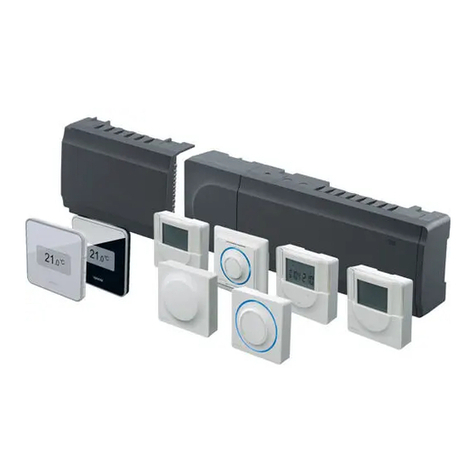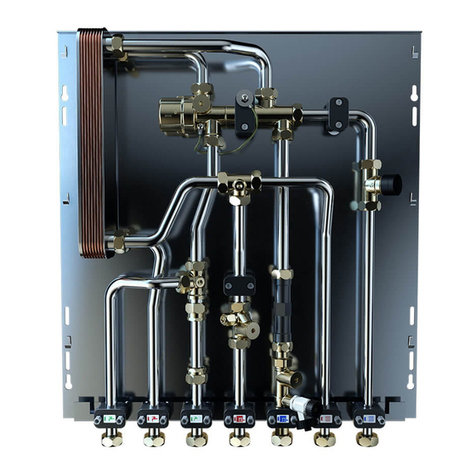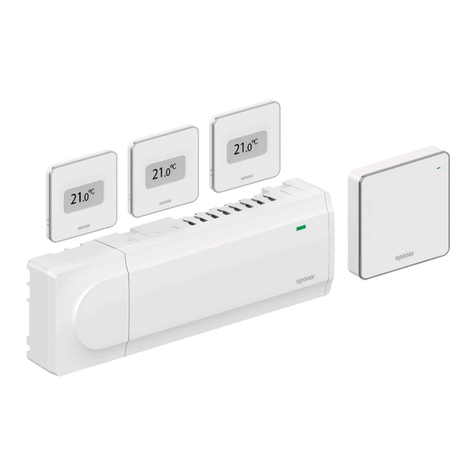
Uponor Combi Port BASE XU l Installation manual l 3
1 Appliance Information
Dear Customer,
Before installing the system, the installer must read, understand and
comply with these installation and operating instructions. We reserve
the right to make technical changes. Please keep these instructions
for future use!
7KLVXQLWDQGLWVDFFHVVRULHVPD\RQO\EHLQVWDOOHGE\TXDOL¿HG
specialist personnel.
2 The heating system must be planned and implemented in
accordance with generally accepted engineering practices, as
ZHOODVWKHFRXQWU\VSHFL¿FVWDQGDUGVDQGJXLGHOLQHV
7KHOLVWEHORZVKRZVVRPHRIWKHFRXQWU\VSHFL¿FUHJXODWLRQVDQG
standards. (The list is not necessarily complete.)
DIN 18380 German construction contract procedures (VOB)
- Part C
DIN 4109 Sound insulation in buildings
DIN EN 6946 Building components and building elements -
Thermal resistance and thermal transmittance
- Calculation method
DIN EN 12831 Heating systems in buildings - Method for
calculation of the design heat load
DIN EN 128282 Heating systems in buildings - Planning of
water-based heating systems
DIN EN 14868 Protection of metallic materials against corrosion
DIN EN 14336 Installation and commissioning of water based
heating systems
VDI 2035 Prevention of damage in water heating
installations
VDI 4704 Water heating installations - Water quality,
pressure maintenance, deaeration - Trainings
VDI/DVGW 6023 Hygiene in drinking-water installations
DIN EN 1717 with national supplements
DIN 1988-100 Codes of practice for drinking
water installations
TRGI Technical Rules for Gas Installation
EneV Energy Saving Directive
Please note that, according to EneV, the heating load of the building
must be recalculated in the event of a major renovation of the
heating system (boiler replacement). The system must be provided
with equipment to enable automatic control according to time and
temperature.
A water analysis is recommended for every drinking water delivery
installation. In the case of warranty claims, water analysis is mandatory.
3 The necessary electrical connections, installation, commissioning
DQGPDLQWHQDQFHZRUNPD\RQO\EHFDUULHGRXWE\TXDOL¿HG
specialist personnel. IEC 364 and/or CENELEC HD 384 or DIN
VDE 0100, DIN VDE 0190 and IEC Report 446 or DIN VDE 0110
and EN 50178, EN 60204, EN 60335/Part 1 and Part 51 and/or
ORFDORUQDWLRQDOSURYLVLRQVPXVWEHVDWLV¿HG
Hazard warning: Before performing any work on the controller
or the components connected to it, disconnect the controller
from the power supply as instructed. The outlets are also in
an inactive state under mains voltage.
We would also ask you to install the systems supplied by us
according to the installation instructions. Our warranty shall be
rendered void in the event of damage caused to the systems or to
the heating system or building due to violation of these instructions.
Refurbishments or alterations are only permitted after consultation
with the manufacturer. The manufacturer accepts no liability for
any damage resulting from improper use of the units.
7KLVSURGXFWFRPHVLQFRQWDFWZLWKRXUPRVWSUHFLRXVIRRGVWXႇ
drinking water. We therefore wish to point out some important
installation and operating conditions.
The drinking water installation must be planned and implemented in
accordance with the German Infection Protection Act, in particular
Article 37 of the Drinking Water Ordinance, DIN 1988, DIN 50930
Part 6, DIN 2000, DIN 2001 and DIN 18381 as well as VDI 6003
and VDI/DVGW 6023 and the DVGW Worksheets quoted below,
as well as generally accepted engineering practices. (The list is
not necessarily complete.)
These are:
W 551 Drinking water heating and drinking water piping
systems - Technical measures to reduce Legionella
growth
W 553 Dimensioning of circulation-systems in central drinking
water heating systems
W 291 Cleaning and disinfection of water distribution systems
DVGW W 557 Cleaning and disinfection of drinking water installations
Regulations of local water supply companies The applicable and
FRPSDUDEOHFRXQWU\VSHFL¿FUHJXODWLRQVDQGVWDQGDUGV
7KHUHDUHDIHZVSHFL¿FSRLQWVWKDWZHZRXOGOLNHWRSRLQWRXW
but note that they are not necessarily complete.
7KLVV\VWHPPD\RQO\EHLQVWDOOHGE\TXDOL¿HGVSHFLDOLVW
personnel.
• During installation, make sure that the open ends of the pipes
are protected against dirt during work breaks.
• The safety equipment of the drinking water delivery installation
must comply with DIN EN 806-2 and DIN 1988-200 or the
comparable national regulations or standards.
7KHV\VWHPPXVWEHÀXVKHGDQGGLVLQIHFWHGEHIRUH
being commissioned and handed over to the user.
• Hot drinking water pipes must be provided with the prescribed
thermal insulation in accordance with EneV and DIN 1988-200.
• The drinking water pipes must be insulated in accordance
with recognised engineering practices.
• The cold water pipes should not be insulated together with
the heating pipes. Thermal separation or, preferably, spatial
separation is required.





























